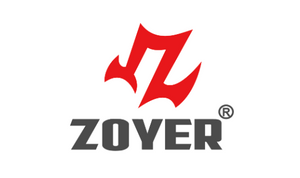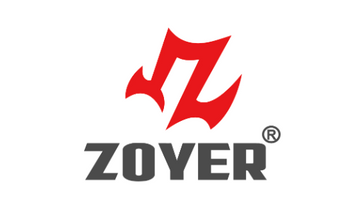Lower Back Pain Explained: Your Guide to Causes, Symptoms, and Effective Self-Care
Are you struggling with waves of aching, stabbing, or stiffening pain in your lower back? Whether it's the difficulty of moving in the morning or the dull ache after a long day of sitting, you are not alone.
According to the World Health Organization (WHO), lower back pain is a leading cause of disability worldwide, affecting nearly everyone at some point in their lives.
This article isn't another dense medical report. It's a practical guide tailored for you, designed to walk you through understanding the source of your pain, identifying warning signs, and taking effective self-care and preventive measures in the clearest, most credible way. The ultimate goal is to help you reclaim a mobile, pain-free life.
Shop Zoyer Back Braces for Work Now →
Why Does My Lower Back Hurt? Understanding the Source of the Pain
Before finding a solution, we must first understand the nature of the problem. The causes of lower back pain are complex, ranging from simple muscle strains to potential structural issues. Knowing where your pain might be coming from is the first step toward recovery.
Common Causes of Lower Back Pain
| Type | Common Causes | Typical Characteristics |
|---|---|---|
| Mechanical / Muscular Pain | Muscle or ligament strain: The most common cause, often resulting from poor posture, a sudden awkward movement, or lifting heavy objects. | A localized dull ache or soreness that worsens with movement and improves with rest. |
| Structural Pain | Herniated or degenerated disc: The discs (cushions between your vertebrae) are damaged or bulge out, potentially pressing on a nerve. | May be accompanied by radiating pain that extends to the buttocks or legs (sciatica), or numbness and tingling sensations. |
| Spinal Arthritis (Osteoarthritis): The cartilage in the joints wears down, causing bones to rub together and bone spurs to form. | Morning stiffness that improves slightly with activity but worsens with overuse. | |
| Spondylolisthesis: One vertebra slips forward over the one below it. | Persistent lower back pain that may worsen when standing or walking. | |
| Inflammatory Pain | Ankylosing Spondylitis & other autoimmune diseases: The body's immune system attacks its own joints, causing inflammation and stiffness. | Often starts before age 30, with severe morning stiffness that worsens with rest and improves with activity. |
| Other Causes | Kidney problems, pregnancy, endometriosis, tumors (rare), etc. | The nature of the pain may differ and could be accompanied by other non-typical symptoms (e.g., fever, weight loss). |
This list is for reference only. A proper diagnosis should be made by a medical professional.
What Symptoms Should I Watch For? Identifying Red Flags and When to See a Doctor
Most lower back pain can be relieved with home care, but certain symptoms may point to more serious problems that require immediate medical attention. Learning to recognize these "Red Flags" is crucial.
Lower Back Pain Red Flags: When to Seek Immediate Medical Attention
| Red Flag Symptom | Possible Underlying Condition | What to Do |
|---|---|---|
| Loss of bladder or bowel control | Cauda Equina Syndrome, a serious nerve compression. | Go to the emergency room immediately |
| Severe numbness in the legs, buttocks, or groin area (saddle anesthesia) | Cauda Equina Syndrome | Go to the emergency room immediately |
| Sudden, severe leg weakness that makes walking difficult | Severe nerve compression | Go to the emergency room immediately |
| Accompanied by unexplained fever or weight loss | Possibility of infection or tumor | See a doctor as soon as possible |
| Back pain following a major trauma (e.g., car accident, fall) | Possibility of a fracture | See a doctor as soon as possible |
| Pain that worsens at night and disrupts sleep | Non-mechanical causes like infection or tumor | See a doctor as soon as possible |
If your pain does not fall into any of the above categories, you can first try the home care solutions that follow.
How to Effectively Relieve and Treat Lower Back Pain
This is the part you care about most: What can I do to get better? We will cover everything from home self-care and rehabilitative exercises to supportive aids and professional medical care.
Home Self-Care and Lifestyle Adjustments
In the first 24-48 hours of an acute flare-up, you can try the following methods:
- Rest moderately, but avoid complete bed rest: Lying in bed for more than a day or two can lead to muscle stiffness and slow down recovery. Engage in gentle daily activities.
- Ice and Heat: In the acute phase (first 48 hours), apply an ice pack for 15-20 minutes every few hours to reduce inflammation. After 48 hours, you can switch to heat to relax muscles and improve circulation.
- Posture Correction: Whether sitting, standing, or sleeping, maintaining the natural curve of your spine is essential. Avoid staying in the same position for too long.
Core Strengthening and Gentle Stretches
Once the acute pain subsides, moderate exercise is key to preventing recurrence.
- Pelvic Tilts: Lie on your back with your knees bent. Tighten your abdominal muscles and gently press your lower back into the floor. Hold for 5-10 seconds.
- Cat-Cow Stretch: Start on your hands and knees. Inhale as you drop your belly and look up (Cow Pose). Exhale as you round your spine and tuck your chin (Cat Pose).
- Knee-to-Chest Stretch: Lie on your back and gently pull one or both knees toward your chest.
Before starting any new exercise routine, consult a physical therapist or doctor if you feel uncertain or if the pain increases.
Supportive Aids and Protection: Using Tools to Regain Stability
During recovery or daily activities, providing your lower back with proper support can not only remind you to maintain correct posture but also offer a sense of security, allowing you to move more confidently. This is where a professional back support brace can make a difference.
Choosing the right back brace is a smart investment in protecting yourself and speeding up your recovery.
How to Choose the Right Zoyer Back Brace for You
| Your Needs / Situation | Recommended Features | Recommended Product Example |
|---|---|---|
| Daily office work, prolonged sitting | Provides basic support, is lightweight and breathable, and serves as a reminder to maintain proper posture. | Zoyer Graphene Magnetic Self-Heating Waist Support Belt: Its graphene and magnetic properties help promote circulation, and its mild support is suitable for daily wellness. |
| Lifting heavy objects, manual labor, or sports | Requires stronger support, excellent stability, and can effectively distribute pressure on the waist. | Zoyer Double Pressure Steel Plate Support Waist Protector: The built-in support plates and dual-compression straps provide superior stability to protect you from re-injury during activity. |
| Late-stage recovery, need for warmth and circulation | Features warming or far-infrared functions, with a skin-friendly and comfortable material. | Zoyer Graphene Far-Infrared Back Support: Combining graphene with far-infrared technology, it provides deep, soothing warmth to help relax tight muscles, ideal for maintenance and recovery. |
A back brace is a supportive tool and cannot replace a professional medical diagnosis or treatment.
Before using any support brace, especially if you have a serious back condition, be sure to consult your doctor or physical therapist to ensure it is appropriate for your situation.
Professional Medical Options
If your pain persists after home care, your doctor might recommend:
- Physical Therapy: A therapist guides you through specific exercises and stretches.
- Medication: Nonsteroidal anti-inflammatory drugs (NSAIDs) or muscle relaxants.
- Advanced Treatments: In rare cases, options like injections or surgery.
Prevention is Better Than Cure: The Long-Term Strategy
Once the pain is gone, the real challenge begins: how to prevent the next episode.
- Keep Your Core Muscles Strong: Continue doing the exercises mentioned earlier.
- Pay Attention to Ergonomics: Adjust your desk and chair height to ensure your screen is at eye level.
- Learn to Lift Correctly: Bend at your knees, not your waist, and let your legs do the work.
- Maintain a Healthy Weight: Excess weight puts extra pressure on your lower back.
- Choose a Supportive Mattress: Ensure your spine is well-supported while you sleep.
Conclusion
While lower back pain is frustrating, it is by no means unbeatable. With the right knowledge, proactive steps, and timely supportive tools (like a Zoyer back brace), you have the power to manage your pain and even get rid of it for good.
Remember, your body is your most valuable asset. Listen to its signals and give it the care and support it deserves, and you can reclaim the vibrant, mobile self you were meant to be.

